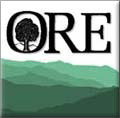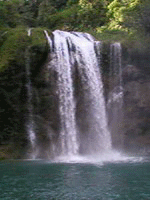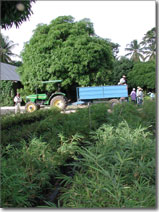Bamboo is a renewable source of material for building and handicrafts
ORE has established a dozen high quality bamboo cultivars suitable for building and handicrafts with the help of Norman Bezona, a bamboo expert from Hawaii. As part of a joint Peace Corps and Partners of America project, Dr. Bezona supplied us with twelve varieties generously donated by the Quindembo Nursery in Hawaii, adding to the collection previously introduced by ORE from Puerto Rico and Florida. He subsequently provided training for propagation by ‘root division’, which has proved highly successful, as propagation by cuttings.
These bamboo varieties are one of the most suitable plant materials to combat the current exponential increase in hillside soil erosion, particularly for the control of ravines, and provide a renewable supply of material for commercial use. They are also a viable substitute for the local building industry's insatiable demand for post wood – a major cause of deforestation in the country.
A look at bamboo in Haiti
Support our efforts to give farmers more bamboo




